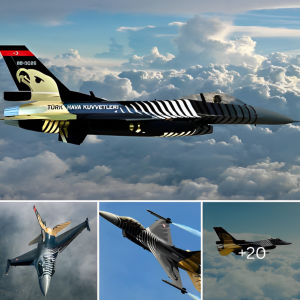At the end of the Cold War the U.S. Navy’s carrier fleets operated the F-14 Tomcat air superiority fighter and the lighter F-18 Hornet multirole fighter – both fourth generation platforms with complementary roles. As a result of the end of the Cold War and refocusing towards the War on Terror, in which costly air superiority platforms were no longer relevant assets, the F-14 was retired in 2006.
The platform’s unreliability and proneness to crashing was also a significant factor. Over a third of the U.S. Navy’s Tomcats had by then crashed – an issue the Iranian Air Force, the platform’s only other operator, also suffered from.
The F-14’s retirmement had the effect of leaving the Navy vulnerable, particularly against rival powers which fielded their own air superiority platforms which could easily outmatch the small F-18 – the J-15 and Su-33 being prime examples. Indeed, the U.S. Navy and Air Force have yet to induct an air to air missile into service with a range comparable to the Tomcat’s AIM-54 Phoenix – giving it unique capabilities in beyond visual range air to air combat.
The result of the Navy’s newfound vulnerability was the induction of the F-18E Super Hornet, a larger fighter based on the F-18 but with superior air to air combat capabilities and a greater range. While inferior to dedicated fighters designed especially for air to air combat and fleet defense such as the F-14, the Super Hornet sought to build on the capabilities of the F-18 and is a significant upgrade compared to the original.
Today with fifth generation air superiority fighters, equivalent to the F-22, being inducted in potential U.S. adversaries, from China’s J-20 in 2017 to Russia’s Su-57 scheduled for 2018, U.S. naval forces find themselves at risk of being significantly outmatched in the air.
This is a direct result of the cancellation of the F-22 carrier program. As a light multirole fighter, the fifth generation F-35C set to enter service in the coming decade will also be unable to fulfil an air superiority role. The Navy’s response has been similar to that when it faced the cancellation of the F-14 – taking the enhanced F-18 and enhancing it further. The result will be what could be called a Super Hornet Plus – for lack of a better term.
The new fighter will be designed specifically to combat stealth capabilities, integrating new long-wave infrared search and track (IRST) systems at long range. While stealth fighters minimize their radar cross section to avoid detection, relying on infra red tracking systems makes such fighters more vulnerable. As Dan Gillian, Boeing’s F/A-18 and EA-18G program manager, stated: “The IRST sensor is a key capability Super Hornet brings to the carrier air wing that nobody else has. It is a counter-air, counter-stealth targeting capability.
Alongside enhanced sensors, the new F-18 fighters will incorporate new engines with a power output of 26,400 lbs – compared to the 22,000 lbs of previous models. Also planned are biennial hardware and software upgrades and upgrades to the fighter’s Raytheon AN/APG-79 active electronically scanned array (AESA) radar and AN/ALQ-214 Integrated Defensive Electronic Countermeasures suite.
Ultimately while the capabilities of the new and more advanced F-18 Super Hornet will pale in comparison to the planned carrier based F-22, the fighters will mean that carrier fleets are not as vulnerable as they once were to attacks by hostile fifth generation air superiority platforms.

Ultimately, should a U.S. carrier fleet face a modern Russian or Chinese Air Force it will find the capabilities of its platforms outmatched by their air superiority fighters – something the Navy currently lacks with neither the F-14 or the F-22. However, by modifying the Super Hornet specifically to counter enemy stealth fighters the U.S.
Navy is increasing its chances of success against such platforms without requiring the tens of billions of dollars it would otherwise need to develop and acquire a carrier based fifth generation air superiority fighter. The upgraded Super Hornet is likely to be one of the first of many anti-stealth technologies the U.S. inducts into its military to counter Russian and Chinese fifth generation fighter programs.





